How to Reduce Recycling Contamination
Contaminated recycling causes problems and means waste goes to landfill or is incinerated. Find out how to reduce recycling contamination in your business.
Have you experienced extra strain carrying your Halloween pumpkin to your car from the supermarket this year? The good news is that there’s nothing to be scared about and you’re not getting weaker – it’s the pumpkins that are getting bigger this year.
Farmers have commented that the wet July and August (with enough sunny intervals) has seen pumpkin crops thrive[1]. A warm September and early October helped ripen the fruits at the right time too[2]. With between 10 and 15 million pumpkins grown and harvested in the UK every year that means most pumpkins sold are bigger and heavier than usual.
You might get more pumpkin for your pound thanks to the miserable summer, but experts at Business Waste are worried it will lead to more pumpkins being wasted. Already around 24 million pumpkins are sold in the UK every year to celebrate Halloween with 18,000 tonnes of pumpkins thrown away that end up in landfill.
“More than half of Brits who buy pumpkins once a year just to make a jack-o’-lantern aren’t aware that they can eat and use the fruit,” says Mark Hall, representative for waste management company Business Waste. “Instead, they scoop out the insides and chuck it straight in the bin, meaning thousands of tonnes of edible pumpkins go to waste. It’s a real shame, especially with the millions of homes in the UK currently experiencing food insecurity.”
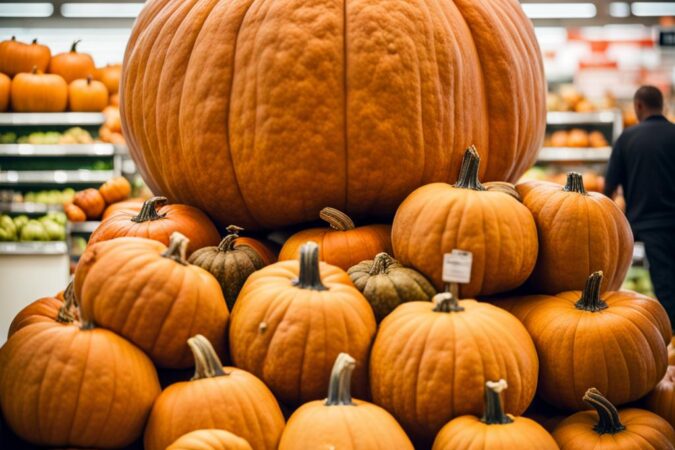
There are no exact figures about how much bigger pumpkins are compared to last year. However, as 18,000 tonnes of pumpkins are thrown out normally in a year, even a 1% increase in size could lead to significant amounts of extra waste:
The average pumpkin that you buy in the supermarket has a diameter of 15 to 25cm and weighs between 2 and 3kg[3]. Medium pumpkins range in size from 60 to 80cm in diameter and can weigh as much as 9kg.
The bigger the pumpkin size you normally buy, the larger it will likely be this year, and the more food waste it will create if disposed of irresponsibly. Unless more consumers eat or use the pumpkin flesh then those buying bigger pumpkins for their porch could create more avoidable food waste in the UK.
“Unfortunately, more food often leads to more waste,” adds Hall. “We encourage people to only buy the number and sizes of pumpkins they need. You should also plan how you’re going to use all of the pumpkin and manage it properly, as after carving a pumpkin it only lasts for 3 days to a week before it starts to rot.”
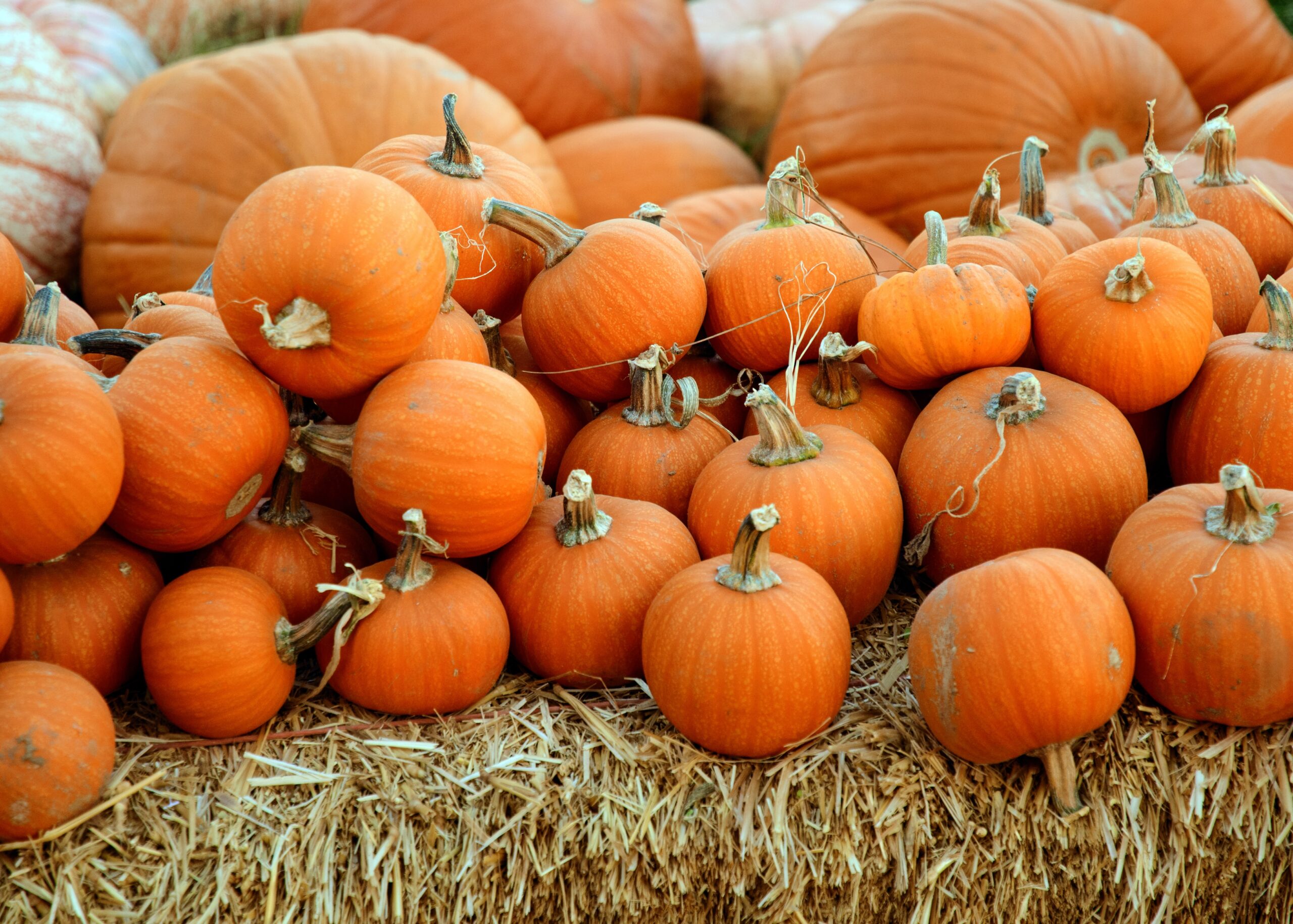
The good news is that last year Tesco reported ten times more people searched for pumpkin recipes on their website than the year before1. Hopefully this suggests more people will be eating the innards of their jack-o-lanterns in 2023 than ever before.
There’s also a growing awareness of the impact of food waste and many recipes and tips out there to help people make the most of their pumpkins. The current cost of living crisis could also encourage more people to think twice and consider cooking and eating them rather than heading straight for the bin. After all, pumpkins are edible fruits.
“There are loads of great ways to eat the innards and flesh of pumpkins,” concludes Hall. “These include traditional sweet and savoury recipes such as pumpkin pie and soups, as well as simply roasting the seeds or blending the flesh to create a homemade pumpkin spiced latte.”
Contaminated recycling causes problems and means waste goes to landfill or is incinerated. Find out how to reduce recycling contamination in your business.
Many tourist hotspots look great in the photos but are sadly surrounded by rubbish and litter. Discover the 10 dirtiest hotspots in the world to avoid.
Millions of pumpkins are grown, harvested, bought, carved, and thrown away at Halloween every year in the UK. It adds to the scary amount of food waste we already create. But there are all sorts of things to do with pumpkins after Halloween to avoid creating more food waste and adding to landfill levels.
Understanding how to dispose of pumpkins after Halloween helps households and businesses use carved and old pumpkins in a more sustainable way. Simply using the innards of a pumpkin in recipes when carving a pumpkin is a good start – yet more than half of all Brits aren’t aware that pumpkins are edible!
Scooping out the insides of a pumpkin and using them to cook up a soup is one of the best things to do before you start carving your jack-o’-lantern. There are other options for making the most of pumpkins in October before they start to rot. Discover what to do with old pumpkins after Halloween with these ideas.
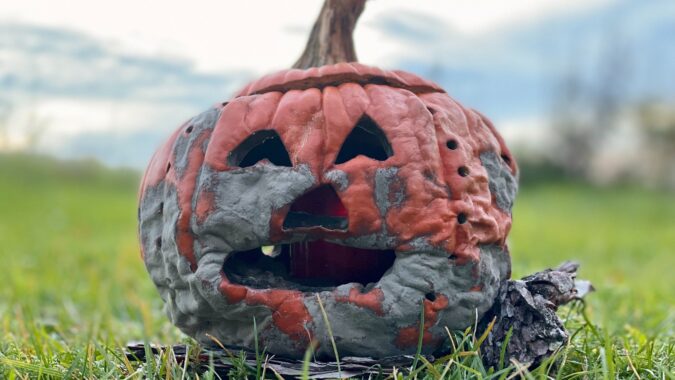
A few frightening facts and stats about pumpkin waste at Halloween are that:
Carved Halloween pumpkins may last for up to five days. In particularly cold areas they might last for up to two weeks before they start to wilt. If you leave an uncarved pumpkin on your porch out of the sun and avoid freezing conditions, it can last for two to three months.
You can extend the life of a pumpkin at Halloween by decorating it with a black marker pen, googly eyes, paper or cardboard – rather than carving into it. If you want to carve it, avoid cutting off the top, as removing the stem shortens the life of any fruit or vegetable. Cut into the back or bottom instead.
Yes, all varieties of pumpkins are edible. You can eat carving pumpkins in the UK, but they’re often a bit waterier and stringier than the types grown for eating. Still, you can eat them – just keep the pumpkin cool, check for any bugs, and ideally use it within 24 hours of carving it.
One of the best things to do with pumpkins after Halloween is using the innards and flesh in seasonal recipes. After carving out the insides of a pumpkin, use this bit of the fruit soon after in your baking or store in the fridge for later. A few pumpkin recipe ideas to use as much of the fruit as possible include:
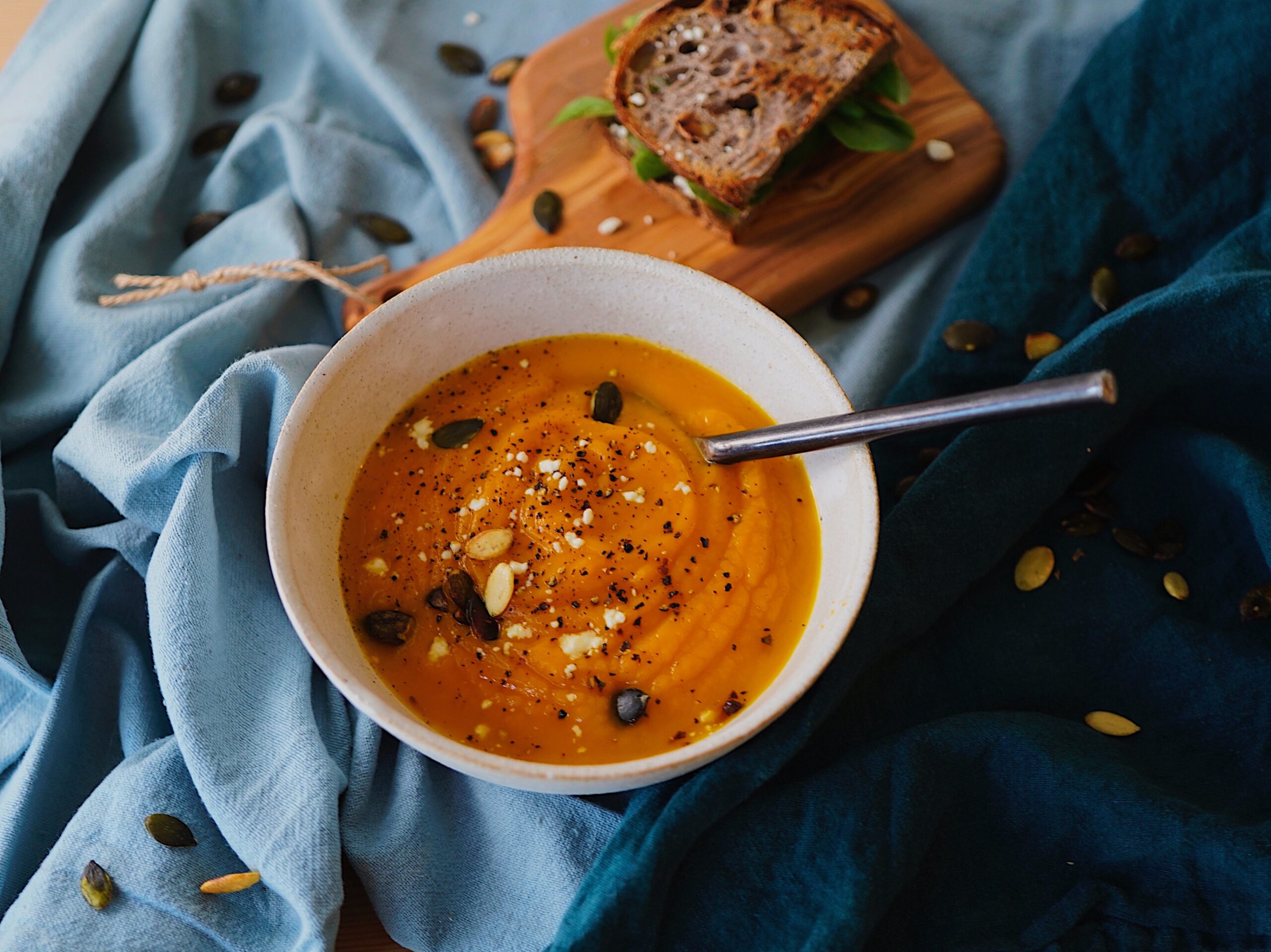
Most people buy pumpkins to transform into jack-o’-lanterns by carving into its orange flesh. This creates a creepy effect but does mean it won’t last very long and you’re left with an awkward shape and amount of pumpkin. Whatever you do though, don’t throw it in your household or business’ general waste bin to prevent it going to landfill.
As mentioned, one of the best things to do with pumpkins after Halloween is to eat as much as possible. However, if you carved into it a few days ago or have already used the edible parts in a few recipes, you might wonder how to dispose of the rest of it. Here are some ideas for what you can do with old carved pumpkins:
It’s not just humans who can eat waste Halloween pumpkins, they’re also safe and healthy to eat for all sorts of animals. Before feeding one to Fido (or any other wildlife), make sure you remove any paint, ink, or other decorations that could cause illness. Otherwise, there are a few things you can do with pumpkins after Halloween for animals:
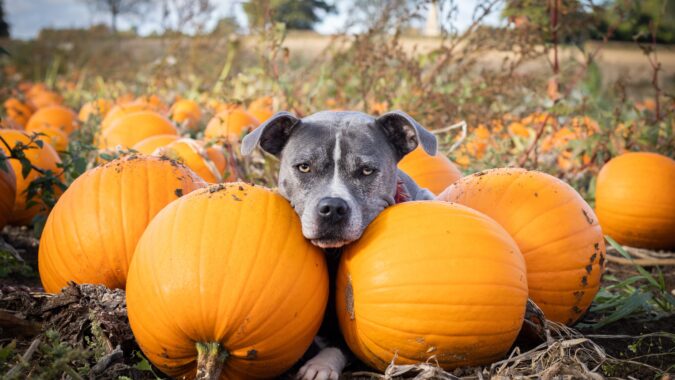
When it’s time to throw your old pumpkin away, don’t put it in the same bin as your household rubbish or general waste at work. This will likely result in it making its way to landfill and adding to increasing greenhouse gas emissions. Instead, to dispose of pumpkins after Halloween use a food waste bin.
Putting old pumpkins in a food waste bin ensures they’re disposed of properly alongside other types of food waste. Often, it’ll go for anaerobic digestion, which uses pumpkins and other food waste to generate energy – a much greener option.
Looking for more tips to reduce your waste around spooky season?
Transforming your home or office into a haunted house means putting up terrifying decorations to get into the spooky spirit. Every year in the UK we spend more than £600 million celebrating Halloween – covering the cost of costumes, décor, food, and drinks. Halloween decorations make up a significant chunk of this amount.
While figures for the UK are currently scarce, trends from the other side of the pond are slowly creeping into our culture. In the USA, 67% of people put up Halloween decorations inside their home, while 61% decorate their gardens and yards. That’s a huge amount of Halloween decorations on display, but what happens to them come November?
A scary amount are thrown away and end up in landfill, but this shouldn’t be the case. Discover what to do with your Halloween decorations to cut down on waste.
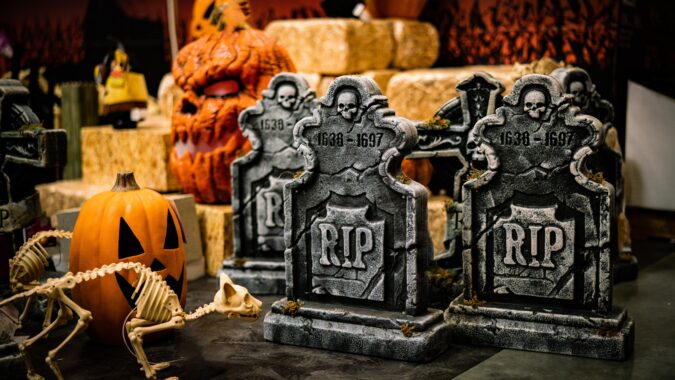
Many of the Halloween decorations sold in supermarkets are made from plastic or include a type of plastic in their materials. There’s nothing wrong with hanging up plastic lanterns in your home, blowing up an inflatable giant skeleton or putting up fake plastic gravestones in your garden. It’s what you do after taking them down that can cause problems.
Throwing away your old Halloween decorations in your household or general waste bin means it’ll end up in landfill or be sent for incineration. Any plastic waste that ends up in landfill takes tens, hundreds, or thousands of years to decompose. Halloween decorations made from metal, wood, and other materials take longer than normal to break down.
As the decorations sit in landfill the chemicals contained in the plastic can leach potentially toxic substances into the ground, water, and air. This has a negative effect on the ecosystem and adds to pollution levels – as landfills release large amounts of greenhouse gases that contribute to global warming.
Some plastic waste, including your old Halloween decorations, may be processed in incinerators to generate energy, rather than heading to landfill. While this avoids contributing to landfill levels, burning plastic releases toxic gases, heavy metals, and particles into the air – still adding to air pollution and having a negative environmental effect.
Where possible avoid throwing your old Halloween decorations away with your general waste. Rather than sending them to landfill or for incineration, there are more sustainable options once October is over. These are three main things you can do whatever materials your old Halloween decorations are made from:
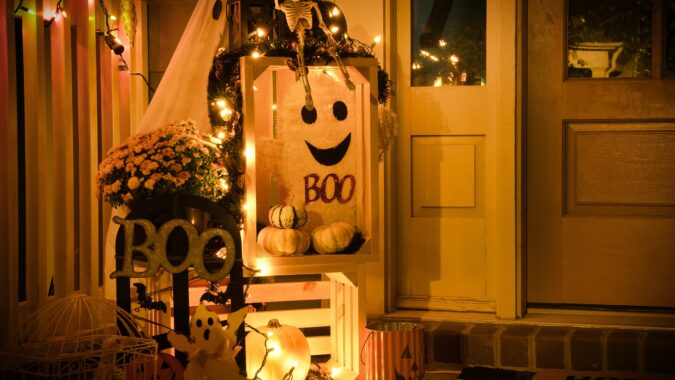
If your Halloween decorations get broken or damaged beyond repair, you might have no option but to throw them out. Thankfully, many can be recycled rather than sent to landfill. Find out how to recycle different Halloween decorations based on their materials.
Any frightening fairy lights or plastic lanterns hung up in your garden or home can be recycled in two parts if they’ve stopped working. Remove the bulbs and recycle these alongside other energy-saving light bulbs – with a dedicated bin or at a recycling centre. You cannot recycle the bulbs with glass recycling as they contain wires.
The wires, casing, and other parts of your Halloween light strings and lanterns should be recycled with any WEEE waste. This ensures the electrical parts are removed and different materials separated and recycled in their individual streams.
Inflatable pumpkins, skeletons, and spiders provide an eerie effect in or outside your home or business. What’s even scarier is trying to recycle them. Most of these inflatables are made from nylon or vinyl and coated with polyvinyl chloride (PVC). These are all hard to recycle by themselves, let alone when combined.
Check the materials your inflatables are made from though, as some types of plastic are recyclable – so you might be able to recycle it in a plastic waste bin. Otherwise, donate or keep your inflatables. If it’s damaged, see if any local artists or schools can use the materials in their projects.
Check the type of plastic your Halloween decorations are made from to see if it’s recyclable. Many plastic types can now be recycled and if your decorations are made from just one type of plastic this should be possible. Ensure the decorations are clean and dry with no contaminants before you put them in a plastic recycling bin or your household recycling bin.
If your decorations light up or include other materials, then they’ll be harder to recycle. Anything with electrical parts should be recycled with WEEE waste. Otherwise, try and separate the plastic from other materials and place in the relevant bin for the likes of glass or metal recycling.
The good news is that glass is one of the easiest materials to recycle. You can normally recycle glass jars, bottles, and ornaments used to decorate your home or office for Halloween. Try and remove any paper or paint added to them if possible.
If you’ve put up wooden signs inside or outside, you might be able to recycle these with any other wood waste. However, any paint or varnish could mean they’ll be rejected, so it’s worth trying to remove this first. Unfortunately, ceramic isn’t recyclable. If you’ve got any broken ceramic Halloween figures or ornaments these need disposing of with general waste.
Rather than buying new Halloween decorations every year, why not create your own from materials around your home or workplace? A few ideas to make recycled Halloween decorations include:
The amount of extra food, plastic, and packaging waste households produce celebrating Halloween every year is well known. But businesses across the UK are just as responsible for generating lots more rubbish as spooky season starts. Having a sustainable plan in place to deal with and recycle commercial Halloween waste is vital for any organisation.
Think about how many shops, pubs, and offices are decorated in October – almost all of them. Businesses are a big contributor to the thousands of tons of excess waste Halloween generates every year in the UK. It means business owners are in a good position to help reduce and recycle Halloween waste though.
Explore ways to effectively manage and reduce the amount of waste your company produces this Halloween to save money and the environment with these tips.
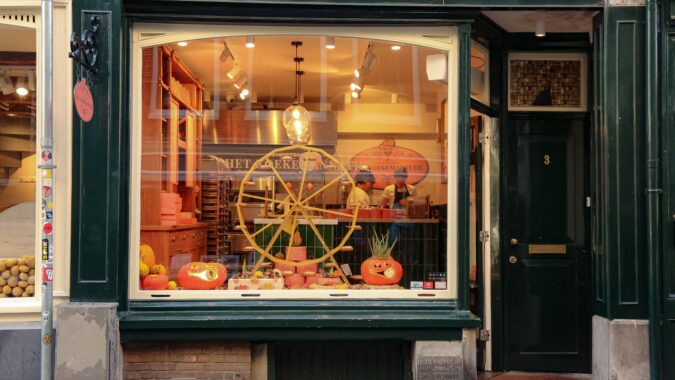
Workplace Halloween parties are a great socialising and teambuilding opportunity – at a good midpoint between summer and Christmas parties. Plenty of preparation will go into the venue, decorations, food, and entertainment. The more carefully you plan things, the easier it is to limit the waste your company’s Halloween party generates.
Order any food based on the number of attendees to minimise how much might be leftover and cut down on food waste. Use glasses for drinks and any plates and cutlery from your workplace kitchen, rather than disposable plastic cups and plates, to cut down on plastic waste.
Check if you or any employees already own Halloween decorations you can use rather than buying new ones. If not, consider making decorations from materials like paper and cardboard, which can be recycled easily afterwards. You could use such an activity as another teambuilding exercise.
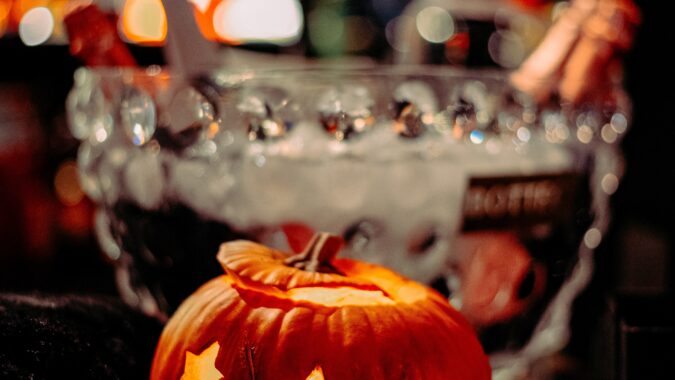
Hopefully your business already uses a variety of different bins to separate its waste types and send as much as possible for recycling. If you only run a small operation though, you might just have a dry mixed recycling bin that meets your daily recycling needs.
When it’s Halloween you may produce more and a wider variety of recyclable waste. Instead of chucking this in with your mixed recycling or general waste bin, using specific recycling bins for each waste stream should ensure as much as possible is recycled. Common items for your business to recycle around Halloween include:
As your business may generate more waste celebrating Halloween, it only makes sense that you’ll need to get your bins collected more often. In preparation for producing more rubbish means you can order bigger bins to store it or arrange more frequent collections in October and early November to manage your waste effectively.
Work out what waste types and how much extra rubbish you might produce to avoid overfilling bins and being hit with overweight charges. Aside from recycling, your general waste output may increase and need managing too. Planning extra bin collections in advance avoids waste stacking up on your premises, which may cause safety, hygiene, and unsightly issues.
If you’re just having a Halloween party at work, you might only need to add an extra one-off collection to cover the excess waste created. Should you have a whole month of celebrations planned – including decorations, parties, and dress-up days – you may need to increase your bin collections for a few weeks.
Contact us to adapt your business waste collections for Halloween.
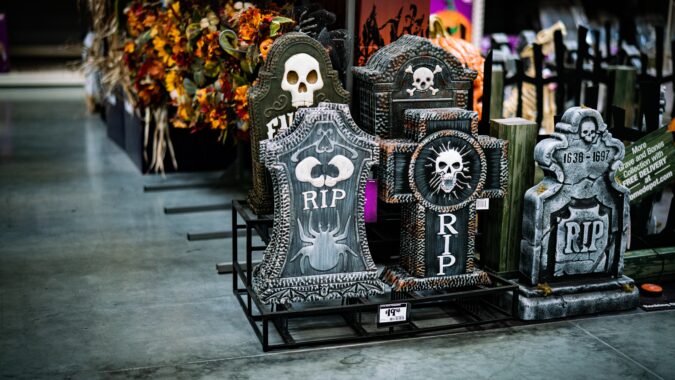
Alongside producing more general waste and recycling, your commercial Halloween celebrations can create specialist waste with which you don’t normally deal. You can use specialist bins that ensure such rubbish is disposed of safely, sustainably, and recycled where possible – rather than going to landfill.
Consider using specialist bins to store and dispose of other waste your business produces at Halloween for:
The easiest way for your business to go green this Halloween and significantly reduce how much waste you produce is to keep as much as possible. Store any Halloween decorations, costumes, tablecloths, themed plates, cutlery, and anything else for next year. This saves money as well as reducing waste.
Where cost cutting isn’t essential, consider letting your employees take home any Halloween decorations to use in their own homes. You could also donate any to local charity shops if your business doesn’t have space to store them for 12 months.
You can easily repurpose some decorations, such as using Halloween light strings to decorate your business at Christmas – as they’re essentially the same as fairy lights. Just remove any specific spooky references if there are any. Other ideas include transforming sheets, paper, and other white decorations into snowy décor. And there are ways to recycle Halloween decorations.
Halloween plastic waste could be the scariest thing about the spooky holiday. Forget the creepy costumes, darker days, and petrifying pumpkins – the increased amount of plastic thrown into landfill around Halloween and its environmental effects are truly terrifying. Decomposing for hundreds of years, leaching chemicals, and releasing greenhouse gases is like something out of a Halloween horror film.
So, what can we do? The rise of plastic use and waste hasn’t gone unnoticed, and many businesses and individual are seeking plastic-free alternatives for their Halloween costumes, decorations, treat, and parties. Find out how much plastic waste we produce at Halloween and ways to cut down this year.
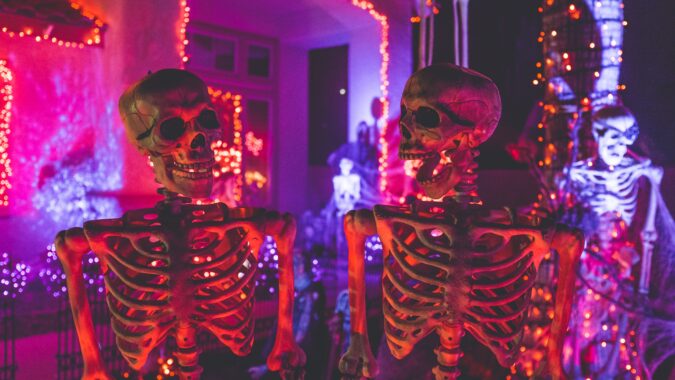
Halloween produces lots of plastic waste from costumes, decorations, and sweet wrappers. Some frightening facts include:
To help bring these numbers down there are various things you can do to reduce the plastic waste Halloween produces.
Buying almost any type of Halloween costume from a supermarket or fancy dress shop will contain some level of plastic that’s tricky or hard to recycle – even when sent for textile recycling. This includes everything from accessories such as plastic Halloween masks to complete costumes. The packaging they’re sold in is also often made from plastic.
Simply avoid buying a new costume every year to cut back on your plastic use and waste.
A few alternatives include:
Wander round your neighbourhood in October and you’ll likely see gardens full of gravestones, skeletons, bats, and more. What do they all have in common (aside from transforming suburban semi-detached homes into haunted houses)? They’re mostly made from plastic, used once, then chucked in the bin.
Thankfully, there are plenty of non-plastic Halloween decorations you can put up in and outside your home instead. These materials and decorations can then be reused, recycled, or kept for next year. A few ideas for plastic free Halloween decorations include:
Throwing a Halloween party at home or work? This can create lots of plastic waste without careful planning. Choosing plastic free Halloween decorations and costumes is a good start, but you’ll also need to focus on the catering. A few considerations for a plastic free Halloween party are:
Sweet and treat wrappers are a real problem at Halloween as most of them are made from a combination of plastic and aluminium. These need separating to recycle each stream individually as plastic and metal waste. However, it’s often either impossible to separate the two or the costs and energy involved are so high that they end up in landfill.
Even Halloween sweet wrappers made from pure plastic might not be recycled if they’re too small to provide value or simply pass through the machines. Those coated in sticky substances and bits of food waste may also be diverted away from recycling to landfill.
The easiest thing to do is provide non-plastic Halloween treats to any trick-or-treaters. Buy sweets in bulk that come in cardboard boxes or glass jars with zero packaging to hand out loose sweets. Other ideas for plastic free Halloween treats include offering home baking, fruit, or paper, foil, or boxed sweets.
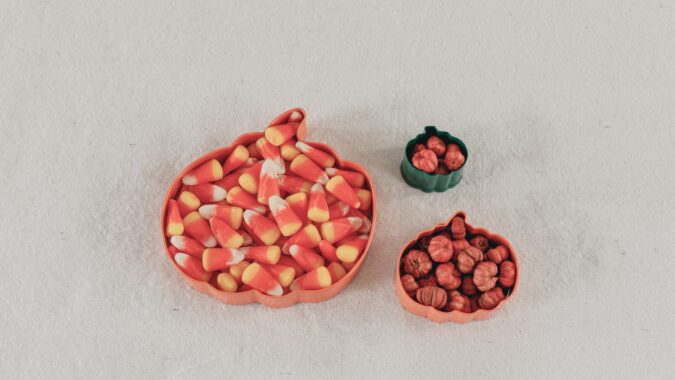
If your own kids are going trick-or-treating, don’t buy cheap plastic Halloween buckets for them to use. These often get used once then thrown away (or left in a cupboard and forgotten about until after you’ve bought another plastic Halloween bucket next year). Instead, use a bucket you already own and decorate with stickers or paint to add a creative pumpkin or skeleton design.
You could also add a Halloween theme to any plain fabric bags you own with a few black and orange pens. If your kids are more bothered about what’s in their bucket/bag than the container itself, simply send them out with a plastic carrier bag.
Going completely plastic free at Halloween can be tricky. For any plastic you use, try and make sure it’s recyclable first. Place a few plastic recycling bins around your workplace or office for easy access and encourage guests to recycle as much as possible. It might not completely eliminate plastic but at least it should divert lots from landfill.
It’s estimated that around 33 million people dress up for Halloween in the UK every year. That’s 33 million Halloween costumes worn by children and adults to get into the spooky spirit – from witches and vampires to superheroes and the latest pop culture characters. But what happens to those costumes once November 1st arrives?
Unfortunately, lots are binned and end up in landfill. Buying a brand-new Halloween costume might be quick, convenient, and ensure you get a high-quality outfit that taps into any topical trends, but it’s another type of fast fashion. Many people wear a costume once then throw it away – and its environmental impact can be scarier than the costumes itself.
Learn all about Halloween costume waste, what happens to it, and ways to reduce it with our ideas for low waste costumes and sustainable disposal.

Dressing up for Halloween is all part of the frightening fun. The costs and amount of waste it produces are truly terrifying though. To highlight the effect spooky season has on the waste industry, here are some stats, facts, and numbers about Halloween costumes:
Most Halloween costumes thrown away in the UK contain non-recyclable, oil-based plastics – meaning when they’re thrown away, they go to landfill or for incineration. In total this adds up to around 2,000 tons of plastic waste – similar to 83 million plastic bottles being dumped in a landfill site.
The plastic materials of Halloween costumes can take tens to hundreds of years to break down when they sit in landfill – often between 50 and 600 years. For example, 63% of Halloween costumes contain polyester. This is a type of plastic derived from petroleum, which takes between 20 and 200 years to decompose.
As these costumes sit in landfill for many years, the chemicals in the plastics can leach and spread into the surrounding groundwater, soil, and air – contaminating nearby water sources. While the costumes decompose, they contribute to the methane gas landfills release. This is a potent greenhouse gas that contributes massively to global warming.
Some Halloween costumes disposed of with your general waste may be incinerated. This can generate heat and energy, and avoids taking up space in landfill. However, burning plastics still releases toxic gases including dioxins, furans, mercury, and BCPs that threaten human, animal, and environmental health.
To cut down on Halloween costume waste, there are other ways to get a petrifying outfit rather than buying brand new. Consider these methods to source a low or zero waste Halloween costume:
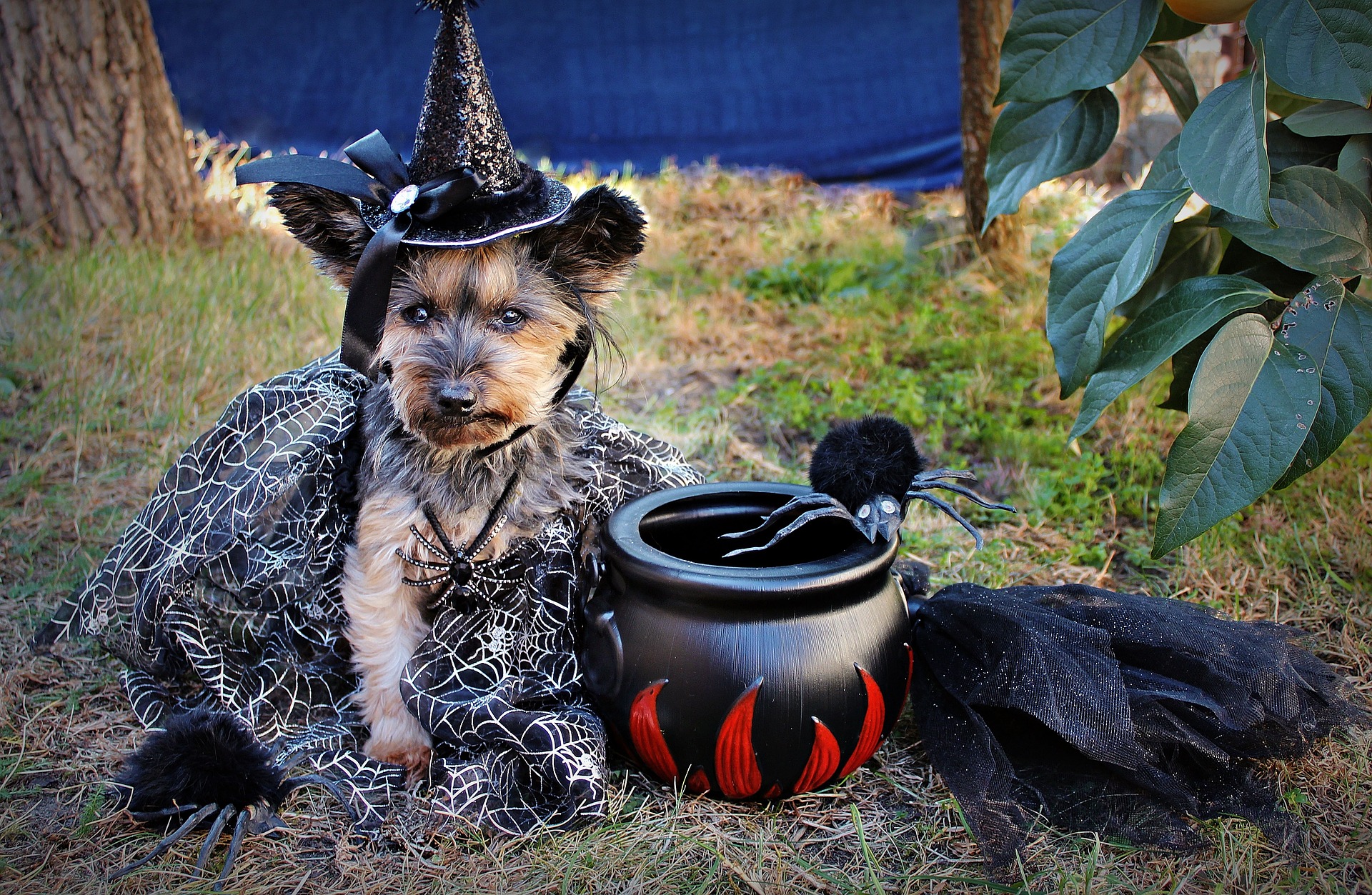
As long as you don’t throw away anything after wearing your spooky outfit, you’ve got a zero waste Halloween costume. The easiest way to create one is using items you already own that you can clean down after making your costume and reuse. Find inspiration for zero waste Halloween costumes with these ideas:
Eventually the life of your Halloween costume may come to an end if it gets damaged, worn out, or you simply have no space for it. The best thing to do is give it to a friend or family member. Or you could donate to a charity shop or sell/give it away for free online through eBay or Facebook Marketplace.
Whatever you do, don’t throw away a Halloween costume with general waste, as it’ll end up in landfill or incineration. Another more environmentally friendly option is to send your old costume for textile recycling. Here the fabrics can be stripped down and reused, while any other materials will be sent for recycling and proper disposal.
Contact us if you have old Halloween costumes you want to recycle or have any questions about the process.
As Halloween creeps closer once again, the excess waste we create celebrating spooky season starts to increase. Every year in the UK we spend a scary £300 million on Halloween – for costumes, decorations, food and drink. A terrifying amount of these items are thrown away and end up in landfill.
Cutting down on waste by recycling and making small changes means you can still have a fun and frightful Halloween while protecting the environment. There are all sorts of low and zero waste Halloween ideas available whether you’re decorating your home, throwing a party, or just taking the kids trick-or-treating.
Use these tips and tricks for a waste free Halloween this year.
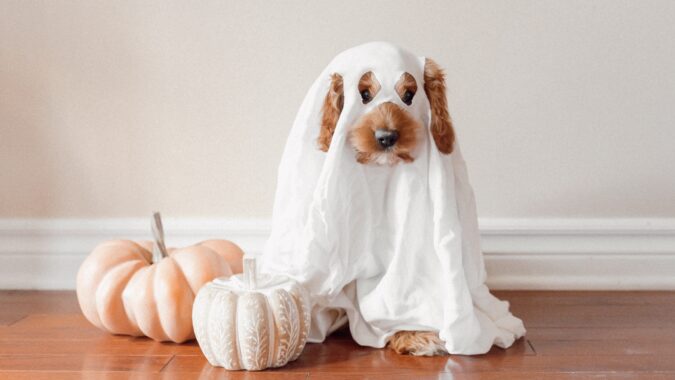
According to The Fairyland Trust, 79% of kids dress up for Halloween every year in the UK (as do plenty of adults). Frighteningly though, about seven million Halloween costumes are binned each year and four in ten costumes are only worn once. Sadly, most of these creepy costumes end up in landfill.
Rather than joining in with the fast fashion trend and buying a brand-new costume, consider these zero waste Halloween ideas for you or your children’s costumes:
Just over 2,000 tonnes of extra plastic waste are created every Halloween in the UK. While costumes are the main cause, the other main culprit is Halloween decorations – from lights to plastic and inflatable characters around your garden and home. Most of these are put up once, then binned when November rolls around.
Zero waste Halloween décor helps cut the amount of rubbish produced. Reusing any plastic Halloween decorations you already have and keeping them for future years is ideal. Most of them last for ages, which means you don’t need to buy any more, reducing the demand and avoiding creating extra plastic waste.
Other ideas for zero waste Halloween décor include:
Sweets and treats are Halloween staples, whether you’re handing them out to trick-or-treaters or have them in a bowl at your party. However, most Halloween sweet wrappers are made from types of plastic that aren’t recyclable. These include metallised plastic film (that looks like foil), combinations of plastic and foil (that can’t be separated) or plastics that are too low quality to recycle.
Choose sweets that come in recyclable packaging when preparing for trick-or-treaters. Waste free Halloween treats can include chocolate and sweets wrapped in paper or cardboard, as these are more likely to be recyclable. Most will say on the side whether the packaging can be recycled or not.
Other ideas for waste free Halloween treats include:
Every Halloween party needs some ghoulish games, whether it’s for kids or adults. Most traditional Halloween tricks and games are low or zero waste anyway, such as apple bobbing and scary scavenger hunts. There are plenty more waste-free Halloween tricks you can add to spice up any party, such as:
A petrifying 14.5 million pumpkins are thrown away in the UK around Halloween every year. They’re often carved up and discarded in a few days, leaving waste companies to deal with a big influx at once. But there are various ways you can cook and eat them to avoid adding to food waste.
Roast pumpkin seeds as a healthy snack, make pumpkin soup, or bake a sweet pumpkin cake (a terrifying take on traditional carrot cake). These all make great options when preparing party food for Halloween or Bonfire night just a few days later.
Try and buy sweet and savoury food in recyclable packaging when planning your Halloween party. Cooking yourself or asking friends to bring a dish or two also reduces packaging. Avoid using plastic disposable cups, cutlery, and plates too – as these can be tricky to recycle – even if the spooky designs fit the theme.
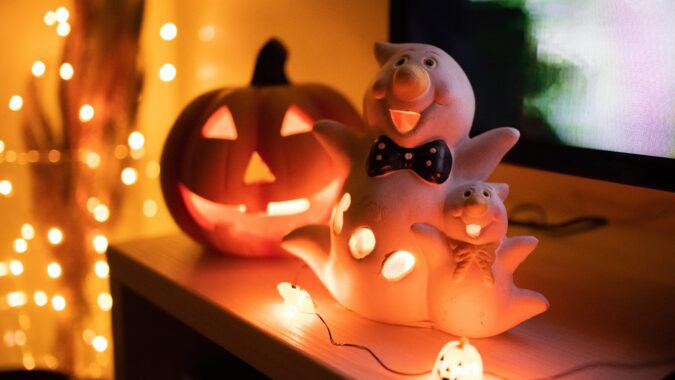
Waste is unavoidable in some cases at Halloween but recycling as much as possible can minimise the environmental impact of your frightening fun. Having recycling bins for paper, cardboard, and dry mixed recycling in high traffic areas that are easily accessible should encourage staff and guests to recycle as much rubbish as possible.
Whether you’re having a Halloween party at work, home, or just decorating the office for spooky season, we can sort you out with the right recycling bins. Contact us today for a free quote for your waste collections.